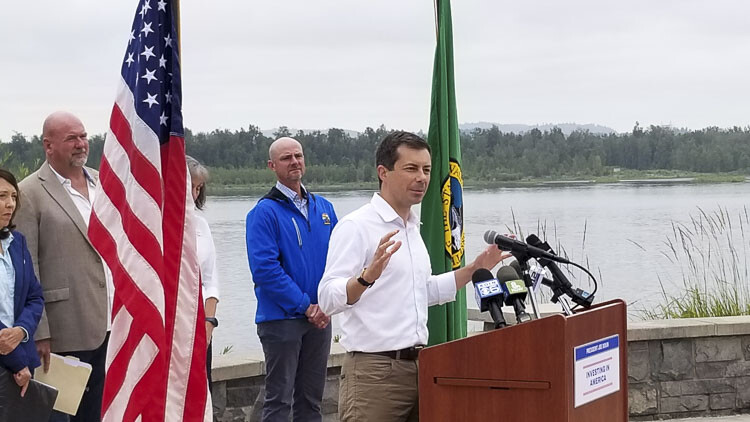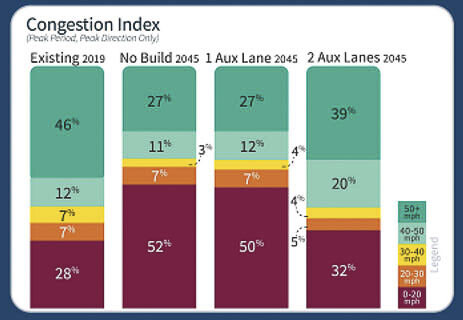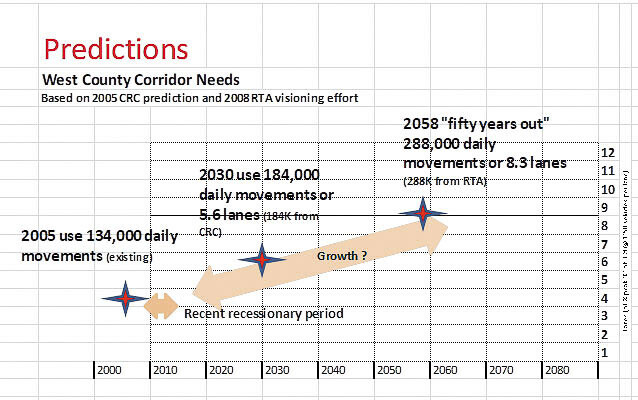Legislators say saving time is most important, but IBR fails that test
John Ley
for Clark County Today
During a visit by DOT Secretary Pete Buttigieg designed to highlight federal funding for a Washougal railroad crossing project, there was a great deal of talk about the Interstate Bridge replacement project. Senator Maria Cantwell and Congresswoman Marie Gluesenkamp Perez mentioned the importance of trying to get federal funding for the I-5 Bridge replacement.
Buttigieg spoke about people’s most valuable commodity being time, and the Washougal project will help people in that community save time. “That’s why this matters so much,” he said. But he also spoke of building transportation projects that will “serve our children and our grandchildren”.

Perez began her remarks by quoting philosopher John Ruskin, saying it should be on a plaque on the I-5 Bridge. “When we build … let it not be for present delights nor for present use alone. Let it be such work as our descendants will thank us for, and let us think … that a time is to come when these stones will be held sacred because our hands have touched them, and that men will say as they look upon the labor, and the wrought substance of them, See! This our fathers did for us!”
“There is not a resource more valuable than your time, the time that this (project) is going to return to all of us, with our families, with our jobs, with our communities,” said Perez. Yet the reality of the I-5 Bridge replacement is that after spending as much as $7.5 billion to replace the current two structures, morning commute times from Vancouver are expected to double, from 29 minutes today to at least 60 minutes by 2045.
Furthermore, that travel time projection also includes the impact of Oregon’s Rose Quarter improvement project. It is now on hold as ODOT hasn’t come up with the money for this and other regional projects.
Additionally, the Interstate Bridge Replacement (IBR) Program team predicts the percentage of rush hour traffic stuck going from zero to 20 miles per hour will also double. Presently, 28 percent of vehicles travel that slow. Fully half of rush hour vehicles will be stuck in congested traffic by 2045, after not only replacing the Interstate Bridge, but also expanding I-5 at the Rose Quarter.
It is unknown how much worse traffic congestion will be if the Rose Quarter project doesn’t get built.
Clark County Today noted the elected officials’ remarks and asked “where is the value in replacing an over-congested, three-lane bridge with another three-lane bridge, when we’re building for our children and grandchildren? Officials are telling us morning commute times will double. Where is the value if we’re not looking forward to the needs of the region for the next 50 to 100 years?”
The secretary responded about the need to do two things at once. One is to maintain what we have, and the other is to more smartly manage the capacity we have.
“That’s why we’re looking to visions that not only include the right kind of throughput for vehicle traffic, but also incorporate all of the different modes that need to be part of the picture so that congestion can be mitigated and managed,” Buttigieg said.
“There are some problems that in addition to making sure you have enough capacity, there’s just not enough asphalt in the world to pave your way out of,” he said. “So we’ve got to make sure that we’re not only enabling vehicles to move, but giving people great alternatives alongside that with active transportation and excellent transit so that the system as a whole can absorb that increased traffic. I’m looking forward for that to be contemplated in the different divisions but state and local leaders bring into In our department for consideration for funding,”

Yet none of the current proposals for the I-5 corridor are projected to save people time, contradicting the politicians’ statements and professed concerns. Cantwell followed up emphasizing that part of the economic development effort is to create more jobs on the Washington side of the river.
Secretary Buttigieg made a sports analogy during his remarks. “In every mode of transportation, we need to be . . . skating to where the puck is going. It’s trying to stay a step ahead.”
Yet it has been over 40 years since a new bridge and transportation corridor was added to regional vehicle capacity. Local officials have failed to add new lanes or new bridges over the Columbia River.
Transportation architect Kevin Peterson has evaluated “where the puck is going” when it comes to I-5 traffic projections. He scrutinized all the data from the previous Columbia River Crossing (CRC) effort.
The I-5 corridor will need five lanes in each direction by 2030, two to four years prior to the completion of the I-5 Bridge replacement, according to Peterson. Furthermore, the corridor will need six lanes by 2040 and nine lanes by 2060.
Additionally, Peterson reported that I-5 at the Rose Quarter will need one to two more lanes than are needed on the bridge, because of added north Portland traffic. Yet the current Rose Quarter project will still only have two through lanes plus two auxiliary lanes, if it gets built. ODOT has placed the project on hold due to funding shortages, as the cost of the project is now roughly four times the original estimate at $1.9 billion.

The IBR is estimating transit ridership on the I-5 corridor will increase to 26,000 to 33,000 daily riders. Yet currently, less than 1,000 people ride C-TRAN transit across the Columbia River. Furthermore, the MAX light rail extension being proposed, can only carry just over 1,000 people an hour. Capacity is limited to just two cars on a train, and TriMet can only run four trains an hour.
“I appreciate that she (Perez) began by quoting Ruskin,” Buttigieg said. “I think it was also Ruskin, who said there is no wealth, but life, all we have is our time, at the end of the day, and it matters in a very deep sense, whether you spend any given minute of your time, investing it in whatever brings most meaning to your life. Being with your children, building your business, deepening your studies, practicing your faith, whatever matters to you.”
Friday’s discussion left many citizens still wondering when transportation officials will actually build infrastructure that will save them time.
Also read:
- Opinion: Hiding the growing cost of the Interstate Bridge replacementJoe Cortright of the City Observatory addresses the rising cost of the Interstate 5 Bridge replacement project.
- 90 minutes of delay on Southbound I-5 in Southwest Washington on Friday afternoon, July 26Travelers using southbound Interstate 5 through Woodland should expect up to 90 minutes of delay during Friday afternoon and evening and should delay travel or prepare for additional travel time.
- Nighttime paving work on I-5 and SR 14 in Clark County July 28-Aug. 9Nighttime travelers in Clark County should expect delays for maintenance and paving work beginning Sunday, July 28 until the morning of Friday, Aug. 9.
- Northeast 182nd Avenue/Northeast Ward Road to be closed on Aug. 1Northeast 182nd Avenue and Northeast 172nd Avenue in Clark County will have single-day closures on August 1 and August 5 for road preservation, with detours in place.
- Interstate Bridge Replacement program awarded $1.499 billion FHWA Bridge Investment Program grantInterstate Bridge Replacement program officials have shared that the program received $1.499 billion through the Federal Highway Administration’s Bridge Investment Program.









